Vivo Parts
Series Y
Series V
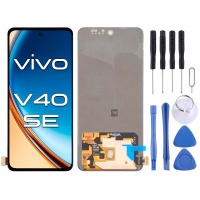
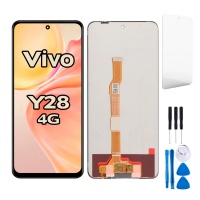

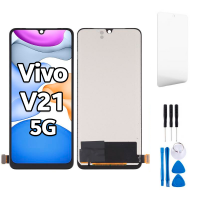
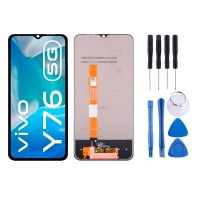
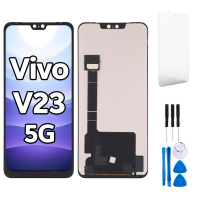


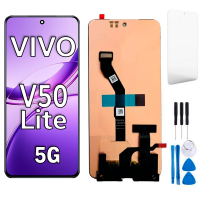

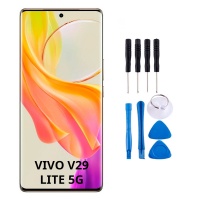



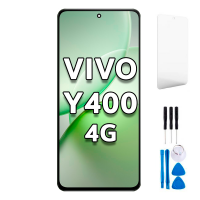






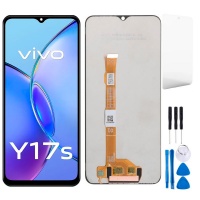


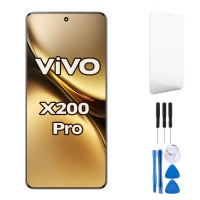
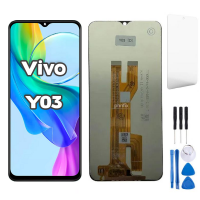
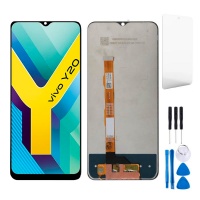


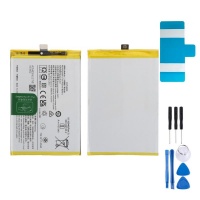
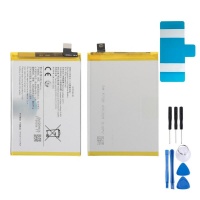

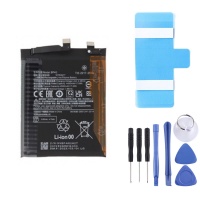
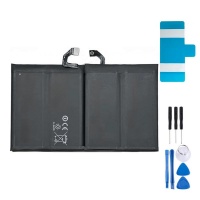


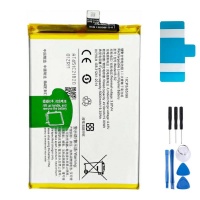


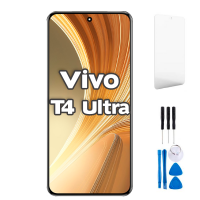
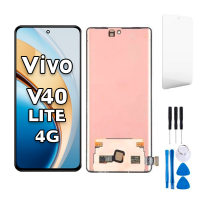
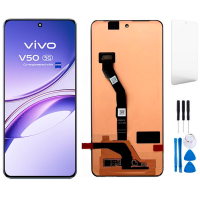

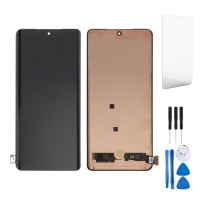



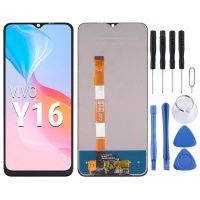
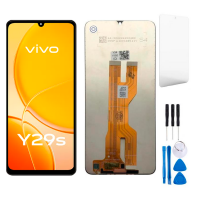



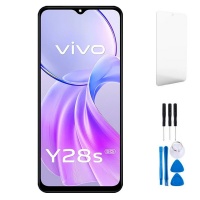
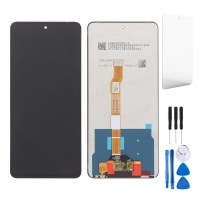


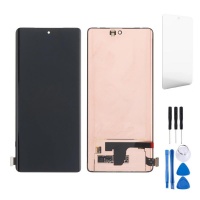
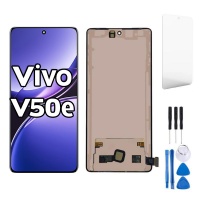


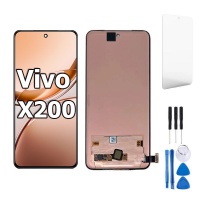



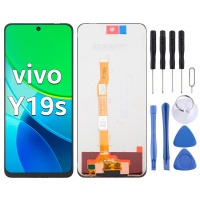
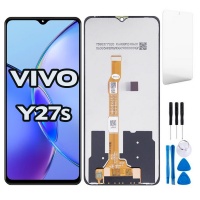


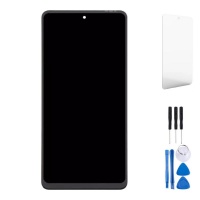
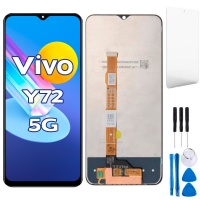
- Give Your Vivo Mobile a New Lease of Life with Spare Parts from iLevante.com! ✨📱
- Getting to Know Vivo: More Than Just a Pretty Mobile 📸🌏
- A Look at its History (The BBK Giant Behind It)
- Quality and Repairability: What to Expect from a Vivo?
- The Vivo Series: V, Y, X... Discover Your Family 👨👩👧👦
- V Series: Style and Top Photography in the Mid-to-High Range
- Y Series: Long-Lasting Battery and Affordable Price for Day-to-Day Use 🔋💰
- X Series: The Power and Camera of True Flagships 🚀
- Other Series (IQOO/NEX): Are Spare Parts Available? 🤔
- Top 10 Vivo at iLevante: The Most Sought-After for Repair 🔧🇪🇸
- Getting Hands-On: Common Hardware Problems in Vivo Mobiles 😩🛠️
- Broken Screen or Unresponsive Touchscreen: A Classic with a Solution 😵
- Exhausted or Swollen Battery: Danger and Solutions! 🔋💥
- Charging Port Not Responding: What to Do? 🔌❓
- Camera Problems: Focus, Spots, or Not Working 📷❌
- Other Common Faults: Speakers, Microphones, Buttons... 🔊🎤
- Your Vivo's Screen: The Definitive Guide to Replacement Parts 🖼️💡
- Technologies: AMOLED, OLED, LCD (IPS/TFT) in Vivo
- Types of Replacement: Original vs. OEM vs. INCELL vs. TFT
- Which to Choose? Quality, Price, and Durability at iLevante.com
- Batteries for Vivo: Renewed Energy for Your Mobile! ⚡🔋
- When to Change the Battery? Warning Signs 📉
- OEM Batteries Without Logo: Are They Really Genuine? (Yes!) ✅
- Common Models (B-S1, B-Z5, etc.) and Compatibility 🔎
- Beyond the Basics: Other Essential Spare Parts for Your Vivo 🧩⚙️
- Charging Connectors (Flex)
- Camera Modules (Rear and Front)
- Back Covers
- Loudspeakers and Internal Earpieces
- Other Internal Flex Cables and SIM Trays
- Hardware Fault or Software Glitch? Funtouch OS Problems 👻💻
- Mobile Keeps Restarting (Bootloop): Causes and Basic Solutions
- Battery Drains Mysteriously: Software to Blame?
- Post-Update and Connectivity Issues
- Quick Guide for DIYers: Repair Your Vivo at Home (Carefully!) 👷♀️🔩
- Essential Tools for the Home Repairer 🛠️
- Basic Steps: Changing the Screen (e.g., Vivo Y21s)
- Basic Steps: Changing the Battery (e.g., Vivo V23 5G - generic steps)
- Safety First! Precautions with ESD and Batteries ⚡⚠️
- Conclusion: Your Vivo, Like New Thanks to iLevante.com 🎉💯
Give Your Vivo Mobile a New Lease of Life with Spare Parts from iLevante.com! ✨📱
Let's be honest, it's happened to all of us. That moment of panic when your mobile slips from your hands and hits the floor 😱, the battery that no longer lasts even half a day 📉, or that charging port that has become temperamental and only works if you position the cable at an impossible angle. How frustrating! If you own a Vivo mobile, you know you have a device that likely stands out for its design and camera, but like any piece of technology, it's not immune to the passage of time or accidents.
Vivo has carved out a significant niche in the market, offering handsets with refined aesthetics and investing heavily in photography. But when something goes wrong, what do you do? Before thinking about spending a fortune on a new mobile, wait! At iLevante.com, we are your allies in bringing your digital companion back to life. We are your go-to shop in Spain for finding quality Vivo spare parts at a good price.
This article is your definitive guide. Here, we'll break down everything you need to know about Vivo mobile spare parts: from getting to know the brand and its different ranges better, identifying the most common problems that might lead you to need a repair, to understanding the types of screens or batteries available and how, with a bit of skill and caution, you can carry out some of the most common repairs yourself. Get ready to become an expert in maintaining your Vivo!
Getting to Know Vivo: More Than Just a Pretty Mobile 📸🌏
A Look at its History (The BBK Giant Behind It)
Although perhaps not as familiar as other brands, Vivo is a major player in the world of smartphones. Founded in Dongguan, China, in 2009 by Shen Wei , Vivo didn't appear out of nowhere. It's part of the technology giant BBK Electronics, a conglomerate that is also behind other well-known brands like OPPO, OnePlus, and Realme. This structure partly explains its rapid growth and capacity for innovation, sometimes sharing resources and technology among its "sister brands".
Since its creation, Vivo has experienced rapid expansion. It started by manufacturing MP3 players and other devices but soon made the leap into telephony. In 2011, they launched their first smartphone, and in 2014, they began their international venture, entering markets such as Thailand, India, and Southeast Asia. Their arrival in Europe, including Spain, occurred later, around 2020 , but since then, they have continued to grow, partly taking advantage of the gap left by other brands and earning a place in the top 5 sales globally and in China. In Spain, its presence is increasingly notable, competing strongly in the mid-range and high-end sectors.
Vivo has always aimed to stand out through innovation, especially in design and photography. They were pioneers in technologies like the under-display fingerprint reader and retractable (pop-up) front cameras in their NEX series. Furthermore, their collaboration with the prestigious optics brand Zeiss on the cameras of their high-end ranges (X Series) demonstrates their commitment to photographic quality.
Quality and Repairability: What to Expect from a Vivo?
In general, Vivo mobiles enjoy a good reputation for build quality, especially in the V and X ranges, where they often use premium materials and attractive designs. However, as with all brands, experiences can vary. Some users report great durability , while others have encountered specific issues with certain models, such as finishes that mark easily or even assembly problems in isolated units. More recent models like the V40 Lite or the Y28 boast IP54 resistance certifications (protection against dust and splashes) , and high-end models like the X80 Pro or X90 Pro achieve IP68 (dust resistant and submersible) , which is a plus point for durability.
Regarding repairability, Vivo mobiles behave similarly to most modern smartphones. The most common repairs are usually screen replacements and battery substitutions. The difficulty of the repair can depend on the model: curved screens (common in the V and X series ) can be more complex to replace than flat ones, and the advanced camera modules of the X series also require more care. However, the availability of spare parts for the main series (V, Y, X) is generally good, and shops like iLevante.com make accessing them easier. Mind you, bear in mind that opening the phone yourself or taking it to an unofficial repair service can void the manufacturer's warranty.
The Vivo Series: V, Y, X... Discover Your Family 👨👩👧👦
To find the right spare part, you first need to know which "family" your Vivo mobile belongs to. The brand organises its catalogue mainly into three series: V, Y, and X, each with a different focus. Let's get to know them!
V Series: Style and Top Photography in the Mid-to-High Range
The V Series is probably Vivo's most balanced and popular range in markets like Spain. It's aimed at users looking for an attractive and modern design, often with curved screens and eye-catching colours (some even change colour in the sun, like the V23 5G! ), and who place great importance on the camera, especially for portraits and selfies.
Technologically, they usually feature good quality AMOLED screens with high refresh rates (90Hz or 120Hz) , capable mid-range processors (like Snapdragon 695/4 Gen 2 or Dimensity 920/7050) , and high-resolution main cameras, sometimes with optical image stabilisation (OIS). Batteries are typically generous (5000mAh or more) with fast charging.
Popular models in this series that you might need to repair include the Vivo V23 5G, Vivo V29 Lite 5G, Vivo V40 Lite 5G, Vivo V40 SE 5G, or the more recent Vivo V40 5G.
Y Series: Long-Lasting Battery and Affordable Price for Day-to-Day Use 🔋💰
The Y Series is the gateway to the Vivo world. These mobiles are designed for users seeking a functional, reliable device for daily use, with great battery life and, above all, at a more contained price. They are ideal if spectacular photos or raw power for demanding games aren't your priority.
Their hallmarks are usually high-capacity batteries, frequently 5000mAh , ensuring they last the day without issues. Screens are typically IPS LCD , although some more recent models might start incorporating AMOLED. The processors are more modest (Helio G, Snapdragon 400/600 series, Dimensity 6000/700 series) and the cameras, while functional, aren't their strong suit. They often retain practical features like the side-mounted fingerprint reader and the 3.5mm headphone jack.
If you have a Y Series model, it's likely one of these: Vivo Y21s, Vivo Y17s, Vivo Y36 (or Y36 5G), Vivo Y22s, Vivo Y72 5G, Vivo Y76 5G, Vivo Y16, Vivo Y35, Vivo Y01, or Vivo Y21.
X Series: The Power and Camera of True Flagships 🚀
The X Series represents the pinnacle of Vivo technology. These are their flagships, designed to compete in the high-end range and aimed at users seeking the latest in performance, premium materials, and, most especially, an outstanding photographic experience.
Here we find the most powerful processors on the market (Snapdragon 8 series, Dimensity 9000 series) , extremely high-quality LTPO AMOLED screens with high resolutions and adaptive refresh rates , and very advanced camera systems. It's common to see multiple sensors, including periscope telephoto lenses for long-range zoom, gimbal stabilisation for super-smooth videos, and the collaboration with Zeiss to optimise lenses and colour processing. Fast charging, both wired and wireless, also tends to be among the fastest available.
Relevant models in this series, though perhaps less common due to their price, are the Vivo X60 Pro, Vivo X80 Pro, Vivo X90 Pro, or the somewhat older but significant Vivo X51 5G.
Other Series (IQOO/NEX): Are Spare Parts Available? 🤔
Besides the three main series, you might have heard of IQOO and NEX. IQOO is a sub-brand of Vivo (though sometimes presented independently) focused on offering mobiles with high performance, often geared towards gaming, featuring striking designs and good power-to-price ratios. The NEX series, on the other hand, was the line where Vivo experimented with innovative technologies and futuristic designs, like pop-up cameras or dual screens, although it seems less active recently.
While at iLevante.com we focus on offering spare parts for the V, Y, and X series, which are the most widespread in Spain and Europe, it's worth checking our catalogue if you have an IQOO or a NEX. The availability of parts for these series might be more limited in our market, but you never know if a part might be compatible or if we have stock for your specific model. Always check compatibility in the product description!
Top 10 Vivo at iLevante: The Most Sought-After for Repair 🔧🇪🇸
At iLevante.com, we know which Vivo mobiles cause the most trouble (and need the most TLC!). We've prepared an approximate list of the 10 models we see most often pass through our customers' "virtual workshop" in Spain. This ranking considers both the model's popularity in our market and the likelihood that, over time or due to an accident, it will need a spare part. Note! This is an estimate, but it will give you a good idea of which models have readily available parts.
- Vivo V23 5G: A very popular mid-range model due to its unique design (it changes colour!) and powerful selfie camera. Having an AMOLED screen and a 4200mAh battery, these are sought-after replacement parts. It's a frequent model in repair shops.
- Vivo Y21s: A bestseller in the entry-level range. Its high sales volume means its spare parts are in high demand. The most common faults are usually the LCD screen and the B-S1 5000mAh battery. Repair guides are available, and parts like charging connectors.
- Vivo Y36 / Y36 5G: A more recent but popular model in the budget/mid-range. With its LCD screen and B-Z5 5000mAh battery , we're likely to see demand for these parts due to accidents or wear. Parts like speakers or connectors are available.
- Vivo V29 Lite 5G: Another recent V-Series with a curved AMOLED screen. Although Vivo highlights its durability , curved screens are more susceptible to drop damage. Its 5000mAh battery will also become a common replacement part over time. It's popular in Spain.
- Vivo Y76 5G: An affordable 5G model that has been on the market for a while. Users are most likely looking for battery replacements (4100mAh) or charging port repairs. It's still receiving software updates , indicating it still has a user base.
- Vivo Y22s: Equipped with Snapdragon 680 and a 90Hz LCD screen. Like other Y Series models, the screen and 5000mAh battery will be the star replacement parts. Parts like the charging board are available.
- Vivo Y17s: A basic handset with Helio G85. Its repairable weak points will predictably be the LCD screen and the 5000mAh battery.
- Vivo X80 Pro: A flagship with a complex camera system (Zeiss, gimbal). Repairs here can be more expensive. The LTPO AMOLED screen and camera modules are the most delicate and costly components to replace.
- Vivo X60 Pro: A slightly older flagship. Users still holding onto it will likely need a battery change (4200mAh) to maintain performance. The AMOLED screen and Zeiss camera module are also key points.
- Vivo V40 Lite (5G/4G): Very recent models , but accidents happen from day one. The AMOLED screen and 5000mAh battery will be the first spare parts sought for these models. Their availability in Spain is confirmed or imminent.
For a clearer overview, here's a summary table of these popular models:
| Model | Series | Original Screen Type | Original Battery (Capacity) | Popularity/Relevance (Spain) |
|---|---|---|---|---|
| Vivo V23 5G | V | AMOLED, 90Hz | Li-Po 4200 mAh | High |
| Vivo Y21s | Y | IPS LCD | B-S1 / 5000 mAh | Very High |
| Vivo Y36 / Y36 5G | Y | IPS LCD, 90Hz | B-Z5 / 5000 mAh | High |
| Vivo V29 Lite 5G | V | AMOLED, 120Hz, Curved | Li-Po 5000 mAh | High |
| Vivo Y76 5G | Y | IPS LCD | Li-Po 4100 mAh | Medium-High |
| Vivo Y22s | Y | IPS LCD, 90Hz | Li-Po 5000 mAh | Medium |
| Vivo Y17s | Y | IPS LCD | Li-Po 5000 mAh | Medium |
| Vivo X80 Pro | X | LTPO3 AMOLED, 120Hz | Li-Po 4700 mAh | Medium (High-End Range) |
| Vivo X60 Pro | X | AMOLED, 120Hz | Li-Po 4200 mAh | Medium-Low (Old Flagship) |
| Vivo V40 Lite (5G/4G) | V | AMOLED, 120Hz | Li-Ion 5000 mAh | Emerging (New) |
Note: Specific battery models should be verified for each phone, but capacity is a good indicator. Popularity is an estimate based on presence in the Spanish market and the likelihood of needing spare parts.
Getting Hands-On: Common Hardware Problems in Vivo Mobiles 😩🛠️
No matter how well you look after your Vivo, accidents happen and wear and tear is inevitable. Fortunately, many of the most common problems can be solved by changing a part. Here we outline the most typical hardware faults that might lead you to search for Vivo spare parts at iLevante.com.
Broken Screen or Unresponsive Touchscreen: A Classic with a Solution 😵
It's the king of repairs. An unfortunate drop , an unexpected knock, or even too much pressure can result in a shattered screen. The problems can vary:
- Cracked Glass, Touchscreen Works: The typical spiderweb crack, but you can still use the mobile. It's tempting to leave it like that, but the cracks can let dust or moisture in and worsen the problem.
- Cracked Glass, Touchscreen Not Working (or Works Badly): Here the damage runs deeper, likely affecting the digitiser. The mobile becomes difficult or impossible to use.
- Black Screen, with Spots or Coloured Lines: This indicates damage to the internal LCD or AMOLED panel. The image looks bad or nothing is visible at all.
- Flickering: Could be due to an internal connection issue, a panel fault, or even a software problem.
- Touchscreen Not Responding (no visible damage): Sometimes, the touch function stops working without any apparent impact. It could be a controller failure, an internal connection issue, or even related to a faulty battery not supplying stable power.
- Green Line: Although more commonly reported in other brands with OLED panels from certain manufacturers , it's not impossible for it to occur in a Vivo with an OLED screen due to internal panel faults.
In most of these cases, the solution involves replacing the complete screen assembly (LCD/OLED + Touchscreen + Glass). At iLevante.com, you'll find screens of different qualities to fit your budget, as we'll see later.
Exhausted or Swollen Battery: Danger and Solutions! 🔋💥
The battery is the power core of your Vivo, and over time, they all degrade. The signs that your battery needs replacing are clear:
- Drains Very Quickly: If it used to last all day and now you need to charge it by mid-afternoon, the battery's capacity has diminished.
- Unexpected Shutdowns: The mobile turns off suddenly even though the indicator still shows a considerable charge percentage.
- Slow Performance: A severely degraded battery might not supply enough power for the processor to run at full performance, making the mobile slower.
- Excessive Overheating: If your Vivo gets very hot when using it or, especially, when charging, it could be a symptom of a faulty battery.
- Swollen Battery: This is a danger sign! If you notice the back cover bulging or the screen lifting, the battery has swollen. This can damage other components and even be dangerous (fire risk). It needs urgent replacement and careful handling.
The causes are varied: the simple passage of time (charge cycles), exposing the mobile to extreme temperatures (too hot or cold) , using poor quality or damaged chargers , or even a strong impact. The solution is clear: change the battery. At iLevante.com, we offer quality OEM batteries for your Vivo.
Charging Port Not Responding: What to Do? 🔌❓
Another classic. Suddenly, your Vivo won't charge, charges very slowly, or you have to wiggle the cable to make contact. Before assuming the worst, try this:
- Clean the Port: With the mobile switched off, use a toothpick (non-metallic!) or compressed air to carefully remove any dust, lint, or dirt accumulated inside the USB-C port. You'd be surprised how often this solves the problem.
- Try Another Cable and Charger: Make sure the problem isn't with the cable or the power adapter. Use ones you know work correctly. It's always recommended to use the original charger or a good quality compatible one.
- Visually Inspect the Port: With a torch, check if the pins inside the port are bent, broken, or corroded (e.g., due to moisture).
If it still doesn't charge correctly after this, the most likely culprit is a damaged charging connector (which usually sits on a small board or flex cable). This part, which often also includes the main microphone , can be replaced. Find the replacement part for your model at iLevante.com!
Camera Problems: Focus, Spots, or Not Working 📷❌
Cameras are a strong point for Vivo, especially in the V and X series. But they can also fail:
- Blurry Photos / Won't Focus: The autofocus system (PDAF) can fail due to hardware. Sometimes, an impact can knock the internal mechanism out of alignment.
- Camera App Closes or Shows a Black Screen: Could be a software glitch (we'll cover this later), but also a camera module connection problem or a failure of the sensor itself.
- Spots or Dots in Photos: If it's not external dirt on the lens, it could be internal dust or damage to the sensor or lenses.
- Broken Camera Glass: The small external lens protecting the camera has cracked or broken due to an impact.
First, clean the external lens thoroughly. Make sure your software is up to date. If the problem persists, you might need to replace the complete camera module (front or rear) or, if it's just the external glass, the camera glass. Look for the specific spare part for your Vivo at iLevante!
Other Common Faults: Speakers, Microphones, Buttons... 🔊🎤
Although less frequent, other parts can cause problems:
- Loudspeaker/Earpiece: If you can't hear calls, music sounds distorted, or ringtones don't sound, the main speaker (buzzer) or the internal earpiece might be damaged , often by dirt or moisture.
- Microphone: If people can't hear you properly during calls or when recording audio, the microphone might have failed. It's sometimes integrated into the charging connector board.
- Physical Buttons: If the power or volume buttons get stuck, don't respond, or work intermittently, the problem is usually with the internal flex cable that connects them.
- Vibration: If the mobile has stopped vibrating, the small vibration motor may have failed or become disconnected.
- SIM Tray: Can easily be bent, broken, or lost.
For all these components (speakers, microphones, button flex cables, vibrators, SIM trays...), iLevante.com offers the necessary spare parts to restore full functionality to your Vivo.
Your Vivo's Screen: The Definitive Guide to Replacement Parts 🖼️💡
The screen is your window to the digital world, and one of the most expensive and delicate parts! If you need to change your Vivo's screen, you'll encounter a load of terms: AMOLED, OLED, LCD, IPS, TFT, INCELL, Original, OEM... Don't panic! Here we explain what each one means and which one suits you best.
Technologies: AMOLED, OLED, LCD (IPS/TFT) in Vivo
Basically, there are two main families of screens in Vivo mobiles:
- LCD (Liquid Crystal Display): These need a backlight to illuminate the pixels. They are more economical and offer good brightness, but blacks aren't as pure (there's always some light bleeding through) and the contrast is lower. Within LCDs, there are subtypes:
- TFT (Thin-Film Transistor): This is the most basic and economical LCD technology. It usually has poorer viewing angles and less vibrant colours than IPS. It consumes more power.
- IPS (In-Plane Switching): An improvement on TFT. It offers better viewing angles and more accurate and realistic colours. It's common in Vivo's Y Series.
- OLED (Organic Light-Emitting Diode) / AMOLED (Active-Matrix OLED): Here, each pixel emits its own light. This allows pixels to be turned off completely to achieve perfect blacks and infinite contrast. They are more energy-efficient (especially with dark backgrounds), thinner, and more flexible. AMOLED is an evolution of OLED with an active matrix that improves the response and control of each pixel. Vivo often uses AMOLED in its V and X ranges. Samsung is the main manufacturer of AMOLED panels (Super AMOLED, Dynamic AMOLED), but others like BOE also manufacture OLED panels, sometimes with quality differences. The main disadvantage is potential "burn-in" if static images are displayed for long periods and a potentially shorter lifespan than LCDs (although this is less of an issue in mobiles).
Types of Replacement: Original vs. OEM vs. INCELL vs. TFT
When you look for a replacement screen at iLevante.com, you'll see different qualities. Here's what they mean:
- Original: The screen manufactured directly by or for Vivo, with the same specifications and quality as the one your mobile came with from the factory. It's the best option for quality and compatibility, but usually the most expensive and hardest to find outside official channels.
- OEM (Original Equipment Manufacturer): These screens are manufactured by the same companies that might make the originals for Vivo, following the same quality standards and specifications, but sold without the brand's logo. They offer quality practically identical to the original at a more competitive price. At iLevante.com, our "Premium" or "Service Pack" quality screens usually fit into this category or are originals pulled from other devices. It's important to distinguish them from low-quality copies sometimes wrongly labelled as OEM.
- AMOLED / OLED (Aftermarket): These are replacement screens using OLED/AMOLED technology, manufactured by third parties. Quality can vary (types like Hard OLED or Soft OLED exist with differences in flexibility and durability ), but generally, they offer vibrant colours and deep blacks, superior to LCDs. They are a good alternative if your mobile originally had an AMOLED screen and you're looking for good quality without the cost of the original.
- INCELL: This is a type of LCD screen where the touch layer is integrated into the LCD panel itself, making it thinner than traditional TFTs. It's considered intermediate quality: better than basic TFT, but doesn't reach the colour and contrast quality of an AMOLED. It's an economical option if your mobile originally had an LCD or if you want to save money on repairing an AMOLED model (though you'll lose image quality). Note: sometimes INCELL screens may not be compatible with the under-display fingerprint reader.
- TFT: The most basic and economical LCD technology. It's the cheapest option for replacing a damaged LCD screen. However, image quality (colours, viewing angles, contrast) will be inferior to IPS, INCELL, and, of course, AMOLEDs. It might also consume slightly more battery power.
Which to Choose? Quality, Price, and Durability at iLevante.com
The choice depends on your mobile, your budget, and your priorities:
- If you seek maximum quality and your mobile is high-end (X Series or V with AMOLED): Try to get an Original screen or a high-quality OEM / AMOLED. You'll get the best visual experience, faithful colours, and all features (like adaptive refresh rate or under-display fingerprint reader) working perfectly. It will be the most expensive option.
- If you're looking for a good balance between quality and price (mid-range V or Y Series mobiles with LCD/IPS, or you want to save money on a high-end model): An INCELL screen or a good quality IPS LCD (if your original was LCD) can be an excellent option. They offer decent quality at a much more affordable price than OLEDs.
- If your budget is very tight or your mobile is low-end (Y Series): A TFT LCD screen is the most economical solution to get your mobile working again. Be aware that the image quality won't be the same as the original, especially regarding viewing angles and colour vibrancy.
Important! When changing the screen, especially for a non-original one, bear in mind that features like the under-display fingerprint reader (common in AMOLED) might stop working or require calibration. Maximum brightness or colour calibration might also vary slightly. At iLevante.com, we specify the quality of each screen so you can choose with all the information. Check the product details for your specific model!
Batteries for Vivo: Renewed Energy for Your Mobile! ⚡🔋
Can your Vivo no longer keep up the pace? Do you spend your day looking for sockets? The battery is one of the components that suffers most from wear and tear with use and time. Knowing when to change it and what type of replacement to choose is key to restoring your mobile's battery life.
When to Change the Battery? Warning Signs 📉
Your mobile usually lets you know when the battery is on its last legs. Pay attention to these signs:
- Rapid Discharge: This is the most obvious symptom. The battery lasts much less than before with the same usage.
- Sudden Shutdowns: The phone turns off by itself, even though the indicator shows there's still charge left.
- Slow Performance: Especially during demanding tasks, the mobile can become slow because the battery isn't delivering the necessary power.
- Overheating When Charging or Using: Excessive and constant heat can indicate an internal battery problem.
- Swollen Battery: If you notice the back cover bulging or the screen lifting, warning! The battery is swollen and must be replaced immediately for safety reasons.
Some operating systems, like Vivo's Funtouch OS, may include a "Battery Health" section in the settings, giving you an estimated percentage of its remaining capacity. Although not an exact science, if it drops below 80-85%, it's usually a good time to consider a change. As a general rule, after 2 or 3 years of intensive use, most lithium batteries show signs of degradation.
OEM Batteries Without Logo: Are They Really Genuine? (Yes!) ✅
When looking for a replacement battery at iLevante.com, you'll see options labelled "OEM" or "Original Quality without logo". What does this mean? It's excellent news for your wallet!
OEM stands for Original Equipment Manufacturer. In the world of spare parts, an OEM battery is one manufactured by the same companies that produce the batteries Vivo installs in its phones from the factory, or following exactly the same specifications and quality controls. The only difference is that these batteries are sold without the Vivo logo printed on them.
Think of it like generic medicines: the same composition and effectiveness as the branded one, but without the trade name and at a lower price. OEM batteries without a logo offer you:
- Quality and Performance Almost Identical to the Original: Same specifications for capacity (mAh), voltage, and safety.
- Perfect Compatibility: Designed specifically for your Vivo model, they fit perfectly.
- Greater Safety: They meet safety standards, unlike "compatible" batteries of unknown origin which can be a risk.
- More Affordable Price: As they don't carry the brand name, their cost is significantly lower than a battery bought from an official service centre (if they even sell them separately).
It's crucial to distinguish these high-quality OEM batteries from other "aftermarket" or "compatible" batteries of dubious origin, which may have lower actual capacity, last less time, or even be dangerous. At iLevante.com, we make sure to offer you reliable OEM batteries for your Vivo.
Common Models (B-S1, B-Z5, etc.) and Compatibility 🔎
Each Vivo model usually uses a specific battery model, identified by a code (normally starting with "B-"). It is essential that you use the correct model for your phone to ensure compatibility and proper functioning.
Here are some examples of battery models for popular Vivos:
- Vivo Y21s (V2110, V2111): Uses battery model B-S1, with a capacity of 5000mAh.
- Vivo Y36 / Y36 5G (V2247, V2248): Uses battery model B-Z5, also 5000mAh.
- Vivo V23 5G (V2130): Its battery is 4200mAh , but the specific model (e.g., B-S9?) needs confirmation. Check the product description at iLevante.
- (Other models): To find out which battery your Vivo uses, you can try searching for your exact model's specifications online (websites like GSMArena usually indicate it) or, if you've already opened the phone, look at the code printed on the old battery itself.
At iLevante.com, each replacement battery clearly indicates which Vivo models it's compatible with. Make sure you choose the correct one before buying! If you have doubts, our support team will be happy to help you.
Beyond the Basics: Other Essential Spare Parts for Your Vivo 🧩⚙️
Although screens and batteries are the queens of repairs, your Vivo has many other parts that might need changing over time or after a mishap. At iLevante.com, you'll also find these essential components:
Charging Connectors (Flex)
As we saw earlier, if your mobile won't charge and you've ruled out dirt or cable/charger problems, the culprit is usually the charging connector. This part usually comes mounted on a small board or flexible cable (flex) that connects to the mainboard. Often, this same flex includes the main microphone or even the headphone jack (if your model has one). Changing this part solves charging problems, PC syncing issues, and sometimes, microphone problems.
Camera Modules (Rear and Front)
If your Vivo's camera suffers hardware damage (persistent focus problems, black screen in the app, severely degraded image quality without a software explanation) or receives a direct hit, you might need to replace the complete module. This includes the sensor and lenses. We also stock the small external protective glass covers for the camera, which are easier and cheaper to change if only that part is broken.
Back Covers
The back of your Vivo, whether glass or plastic, is vulnerable to drops and scratches. A broken cover is not only unsightly but can leave internal components exposed to dust and moisture. At iLevante.com, you'll find replacement back covers in different colours to restore your Vivo's original look.
Loudspeakers and Internal Earpieces
Can't hear calls properly? Does music sound distorted or not at all? It could be a problem with the main speaker (buzzer, for ringtones and multimedia) or the internal earpiece (the one you put to your ear to talk). These modules can also be replaced.
Other Internal Flex Cables and SIM Trays
There are other small components that can fail: the flex cables connecting the power and volume buttons to the mainboard , other internal interconnect flex cables , or the tray where you insert the SIM card and microSD (if your model supports it), which sometimes breaks or gets lost. We also have these small but important spare parts!
Hardware Fault or Software Glitch? Funtouch OS Problems 👻💻
Warning! Sometimes, your Vivo might behave strangely and make you think a part is broken, when the problem is actually in the software. This is especially common after an operating system update (Funtouch OS, Vivo's customisation layer over Android ). Before rushing out to buy spare parts, consider if it might be one of these software faults.
Mobile Keeps Restarting (Bootloop): Causes and Basic Solutions
A "bootloop" is when your mobile gets stuck restarting over and over again, showing the Vivo logo but without fully booting up. It can be maddening, but often has a solution without changing parts.
Common Causes (Software): A Funtouch OS update that went wrong or was interrupted , corrupt system files, or an incompatible application you recently installed.
Solutions (from a technician's perspective):
- Force Restart: This is the first thing to try. Press and hold the Power button and the Volume Down button simultaneously for about 10-20 seconds until the mobile vibrates and restarts. Sometimes this alone solves it!
- Enter Recovery Mode: If the force restart doesn't work, try booting into the recovery menu. Turn off the mobile (if you can) or wait for it to turn off in the loop. Then, press and hold Power + Volume Down (the combination might vary slightly, but this is the most common on Android ) until a special menu appears.
- Wipe Cache Partition: Inside Recovery Mode, look for this option (if available in Funtouch OS Recovery). Use the volume buttons to navigate and the power button to select. This clears temporary files and can solve boot problems without deleting your data.
- Factory Reset (Wipe Data / Factory Reset): This is the nuclear option from Recovery Mode. It solves most serious software problems, but IT WILL ERASE ALL YOUR DATA! (photos, apps, settings...). Only use it as a last resort if you can't boot the mobile and you don't have a backup.
Battery Drains Mysteriously: Software to Blame?
Have you noticed your Vivo's battery drains rapidly since the last Funtouch OS update? Before blaming the physical battery, think about the software:
Common Causes (Software):
- Recent Update: It's very common that after a major update (like moving from Android 13 to 14, or to Funtouch OS 13/14/15), the system needs a few days (and several full charge cycles) to "settle down" and optimise consumption. Some recommend leaving it charging for extra time after reaching 100% to help with calibration.
- "Vampire" Application: An app you recently installed or updated could be consuming a lot of battery in the background, even if you're not using it. Funtouch OS is sometimes aggressive about closing background apps, but some might slip through.
- Screen Settings: Very high brightness, refresh rate always at maximum (e.g., 120Hz), or Always-On Display consume quite a bit of battery.
- Poor Signal: If you're in an area with poor signal, the mobile uses a lot of power constantly searching for a network.
- Sync Services: Many accounts syncing data (email, social media) in the background also consume power.
Solutions (Software):
- Check Battery Usage: In Settings > Battery, see which applications or services are consuming the most.
- Optimise Settings: Reduce brightness, use auto-brightness, lower the refresh rate if you don't need it, disable Always-On Display. Activate power-saving modes or specific features like Funtouch OS's "Night Mode" or "Bedtime Mode".
- Manage Background Apps: Restrict background activity or notifications from apps you don't need constantly.
- Update Everything: Make sure you have the latest version of Funtouch OS and all your apps.
- Aeroplane Mode: Activate it if you have no signal or you don't need connectivity.
- Factory Reset: If the drainage is extreme and persistent after an update, a reset (after backing up) might be the solution.
Post-Update and Connectivity Issues
Funtouch OS updates sometimes bring some unexpected "gifts" besides battery drain:
- Connectivity Failures: Problems connecting to Wi-Fi, Bluetooth disconnecting , or mobile data not working properly.
- Apps Closing Themselves (Crashes): Applications that worked fine now close unexpectedly.
- Features That Stop Responding: The fingerprint reader doesn't recognise your finger , notifications don't arrive or are delayed , auto-rotation fails , or the system generally feels slow or laggy.
Solutions (Software):
- Restart the Mobile: The universal first step that solves many temporary glitches.
- Clear Cache of Problematic Apps: Go to Settings > Applications, find the app that's failing and clear its cache.
- Update the Apps: Make sure all your apps are updated from the Google Play Store.
- Reset Network Settings: For Wi-Fi, Bluetooth or mobile data problems, look in Settings for the option to reset network configuration (this will erase saved Wi-Fi passwords).
- Wait for a New Update: If the problem is a known operating system bug, Vivo usually releases patches to fix it. You can report the bug using Vivo's feedback tool (sometimes accessible by dialling
*#800#in the dialler). - Factory Reset: Again, the last resort if nothing works (back up first!).
Distinguishing between a hardware fault and a software one can save you time and money. If the problem persists after trying these software solutions, then it's likely you need a hardware replacement from iLevante.com.
Quick Guide for DIYers: Repair Your Vivo at Home (Carefully!) 👷♀️🔩
Warning! Before you start, an important notice. Attempting to repair your mobile yourself has its risks. You can damage other components if you're not careful, and you will almost certainly void the official manufacturer's warranty. This guide only offers basic steps for the most common repairs (screen and battery). If you don't feel confident, it's better to go to a professional. If you decide to proceed, you do so at your own risk. And safety comes first!
Essential Tools for the Home Repairer 🛠️
To tackle your Vivo, you'll need some specific tools. Forget the kitchen knife! Here are the basics you should have :
- Precision Screwdriver Kit: Essential. You'll need small Phillips head bits (crosshead, #000 or #00 are common), and perhaps Torx or Pentalobe depending on the model. Better if they have magnetic tips.
- Plastic Opening Tools: Spudgers (thin spatulas), guitar picks, or thin pry tools. These are crucial for separating components and disconnecting flex cables without damaging anything. Avoid using metal to pry!
- Suction Cup(s): To lift the screen or back cover once the adhesive has softened.
- Heat Gun or Hairdryer: To apply gentle, controlled heat to the edges and soften the adhesive that seals the screen or back cover. Be very careful not to overheat!
- Precision Tweezers: To handle tiny screws and flex cables. Anti-magnetic and anti-static ones are recommended.
- Anti-static Wrist Strap (ESD) and Anti-static Mat: Essential for protecting internal components! Static electricity from your body can fry sensitive parts without you realising.
- Specific Adhesive (B-7000 or similar) or Double-Sided Adhesive Tapes: To securely stick the screen or back cover back on.
- Isopropyl Alcohol (IPA) and Lint-Free Cloths/Swabs: To clean old adhesive residue and surfaces before applying new adhesive.
- SIM Ejection Tool: The one that came with your mobile or an unfolded paperclip.
- Optional but useful: Magnetic mat for organising screws , nitrile gloves , safety glasses.
At iLevante.com, besides spare parts, you can also find many of these tool kits.
Basic Steps: Changing the Screen (e.g., Vivo Y21s)
The exact process varies by model, but here's a general idea, using guides like the one for the Vivo Y21s and common procedures as a reference :
- Turn off the Mobile! Completely off. Remove the SIM tray.
- Apply Gentle Heat: Heat the edges of the back cover (if it opens from the back, like the Y21s ) or the screen (if it opens from the front) with the heat gun or hairdryer to soften the adhesive. Don't apply too much heat.
- Open Carefully: Use the suction cup to create a small gap and insert a thin plastic pick. Slide it gently around the edges to cut the adhesive and separate the back cover or screen. Be careful of any flex cables that might be connected.
- Disconnect the Battery!: Once open, locate the battery connector on the mainboard and disconnect it with a plastic tool (spudger). This is the most important safety step!
- Disconnect the Old Screen: You may need to remove some screws or protective plates. Locate the screen flex cable(s) and disconnect them carefully using the spudger.
- Remove the Old Screen: Lift it out carefully. Thoroughly clean the frame of adhesive residue or broken glass. If the new screen doesn't include components like the earpiece grille, transfer them from the old one.
- Test the New Screen: Temporarily connect the new screen's flex cables and the battery's flex cable. Briefly turn it on to check that the image and touch are working. Then turn it off and disconnect the battery again.
- Install the New Screen: Remove the protective films from the new screen. Apply new adhesive (pre-cut strips or B-7000 type glue) on the frame. Carefully place the screen, making sure it fits properly, and connect its flex cables.
- Reassemble: Connect the battery. Replace any protective plates and screws you removed. Apply adhesive to the back cover (if you removed it) and close it. Insert the SIM tray.
- Press and Wait: Use soft clamps or rubber bands to keep the phone closed while the adhesive cures (a few hours, follow the glue instructions).
Basic Steps: Changing the Battery (e.g., Vivo V23 5G - generic steps)
Changing the battery is usually a bit simpler than the screen but requires the same precautions, especially with the old battery :
- Turn off the Mobile! And remove the SIM tray.
- Apply Gentle Heat: Heat the edges of the back cover.
- Remove the Back Cover: Use a suction cup and plastic picks to separate it carefully.
- Disconnect the Battery!: Locate and disconnect the battery flex cable from the mainboard with a spudger. There might be screws or plates covering it.
- Remove the Old Battery: Very carefully! They are usually glued in. Look for adhesive pull-tabs. If not, you'll need to pry gently with a flat plastic tool (NEVER metal!). Do not puncture or bend it excessively.
- Place the New Battery: Put it in place. If the old one had adhesive strips, apply new ones if necessary so it doesn't move.
- Connect the New Battery: Connect its flex cable to the mainboard.
- Reassemble: Replace plates and screws. Apply adhesive to the back cover and close it. Insert the SIM.
- Charge and Calibrate (Optional): Charge the new battery to 100%. Some recommend doing a couple of full charge/discharge cycles to calibrate the indicator , although with modern lithium batteries, it's not always strictly necessary.
Safety First! Precautions with ESD and Batteries ⚡⚠️
We repeat: safety is paramount. Two critical points:
- ESD (Electrostatic Discharge): Your hands can accumulate static electricity that, even if you don't feel it, can irreversibly damage the chips in your mobile. ALWAYS use an anti-static wrist strap connected to a ground point (like an unpainted metal part of the mobile's chassis or a specific mat) BEFORE touching any internal components. Work on an anti-static surface if possible. Don't wear polyester clothing and avoid carpets. Handle boards and components by their edges.
- Handling Lithium Batteries: They are delicate and potentially dangerous if damaged. NEVER use metal tools to pry them. DO NOT puncture, pierce, or bend them excessively. Always disconnect it AS SOON AS you open the phone and reconnect it JUST BEFORE closing it. If you see a battery smoking or swelling significantly, move away and leave it in a safe, ventilated place. Dispose of old batteries at appropriate recycling points, not in the regular rubbish.
Also, always work in a clean, well-lit, and ventilated area. Organise the screws so you don't lose them (a magnetic mat helps a lot ). Don't force parts. And if something doesn't seem right, stop and seek professional help!.
Conclusion: Your Vivo, Like New Thanks to iLevante.com 🎉💯
And there you have it! We hope this comprehensive guide has been useful to you in better understanding your Vivo mobile, identifying its potential problems, and learning about the available solutions. As you've seen, although Vivo is a brand that cares about quality and design , no phone is indestructible. The most common faults, like a broken screen or a battery that no longer performs, have a solution.
The good news is that you don't have to give up your mobile or spend a fortune on a new one. With the right spare parts from iLevante.com, you can restore its full functionality and splendour. Whether you need a Vivo screen (AMOLED, INCELL, TFT...), a quality OEM Vivo battery (remember, as good as the originals but without the logo!), a charging connector, a camera, or any other Vivo part, in our online shop, you'll find what you're looking for for your specific model.
We encourage you to explore our catalogue at iLevante.com. Search for your Vivo model and discover all the spare part options we have for you. Extending the life of your mobile is a smart, economical, and sustainable option. Give your Vivo a second chance and enjoy it like the first day! 😉👍






